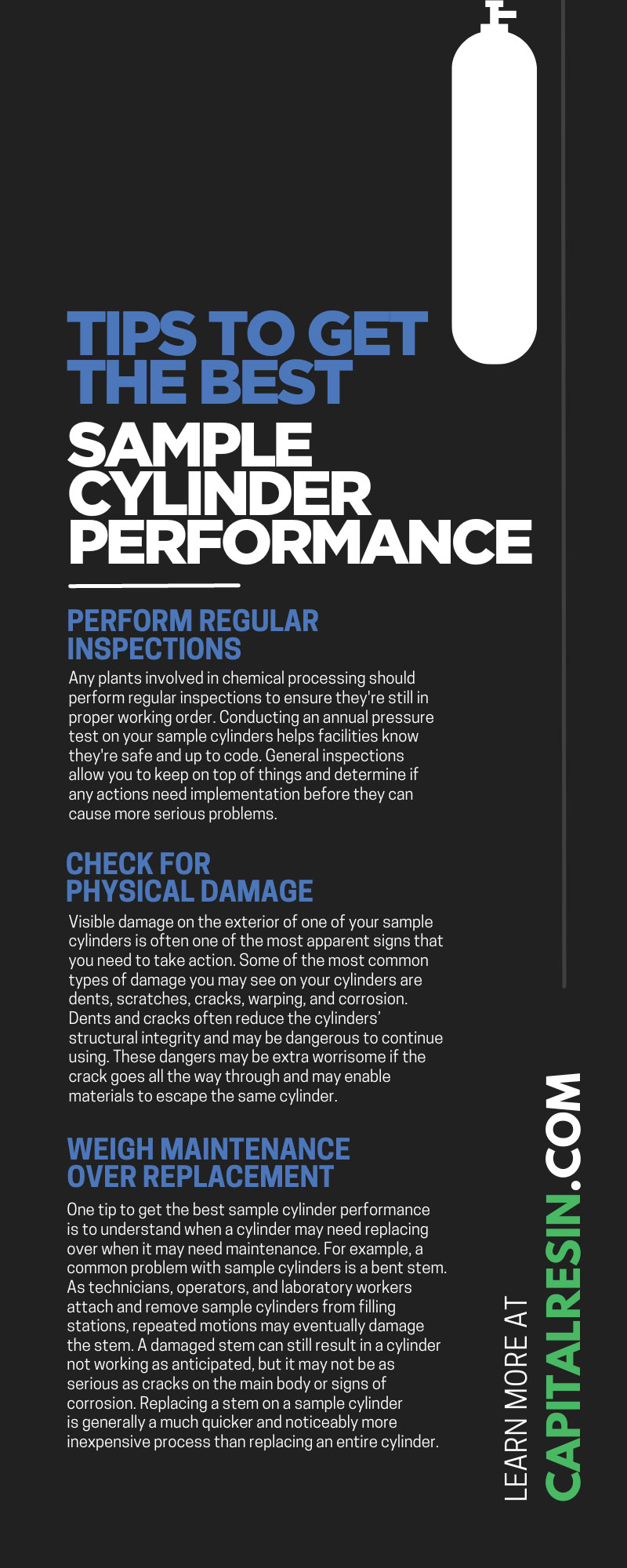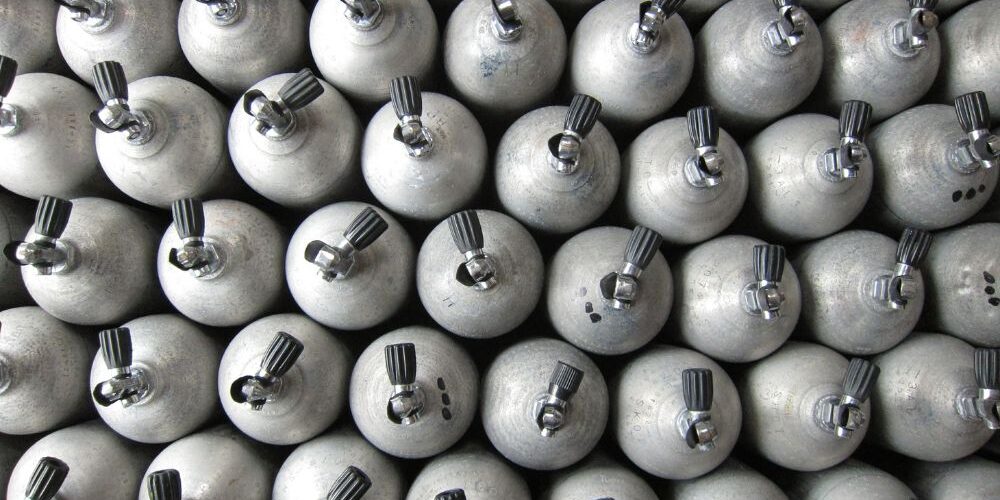Sample cylinders are invaluable pieces of equipment for any industry that utilizes grab sampling. Grab sampling is the process of extracting a small sample of a liquid or gas from a larger production and putting it into a smaller sample cylinder for transport, analysis, or further experimentation.
Because of the somewhat hazardous nature of the chemicals that a company may need to use for grab sampling, it’s essential that they keep the cylinders in good condition. General damage to the metal cylinders can lead to further complications that could result in injury. Because many people attach, detach, load, unload, and transport sample cylinders every day, it’s natural that they suffer some general wear and tear over time.
Dents may negatively affect the pressure of the sample cylinder, while cracks may allow gases or liquids to seep out. Corrosion may be a sign that the inner lining of your sample cylinder is wearing away. These problems may result in safety concerns and negatively impact your samples and lead to changes in your final conclusions.
It’s vital for chemical manufacturing facilities to have a proper sample cylinder maintenance program to boost their performance. Proper maintenance practices yield better results and promote safety throughout your workspace. To avoid any potential mishaps with grab sampling, here are five tips to get the best sample cylinder performance to keep your facility and staff safe from possible hazards.
1. Perform Regular Inspections
Understandably, regular sampling can put your cylinders under a lot of duress. Many people from technicians, laboratory staff, and other operators will handle and transport these metal cylinders throughout the day. Even moving them from the sampling station to the laboratory can eventually lead to physical degradation of the sample tube, more so than transporting the cylinders via a truck bed.
Any plants involved in chemical processing should perform regular inspections to ensure they’re still in proper working order. Conducting an annual pressure test on your sample cylinders helps facilities know they’re safe and up to code. General inspections allow you to keep on top of things and determine if any actions need implementation before they can cause more serious problems.
2. Check for Physical Damage
Visible damage on the exterior of one of your sample cylinders is often one of the most apparent signs that you need to take action. Some of the most common types of damage you may see on your cylinders are dents, scratches, cracks, warping, and corrosion. Dents and cracks often reduce the cylinders’ structural integrity and may be dangerous to continue using. These dangers may be extra worrisome if the crack goes all the way through and may enable materials to escape the same cylinder.
A type of damage that may be harder to notice at a cursory glance is that pressurized gases or liquids in your sample cylinders may eventually cause them to warp and expand. The slightly wider cylinder body may change the results of your tests and have you working with a structurally unstable cylinder. Examining your cylinders for these physical problems and taking appropriate action is essential.
3. Weigh Maintenance Over Replacement
One tip to get the best sample cylinder performance is to understand when a cylinder may need replacing over when it may need maintenance. For example, a common problem with sample cylinders is a bent stem. As technicians, operators, and laboratory workers attach and remove sample cylinders from filling stations, repeated motions may eventually damage the stem. A damaged stem can still result in a cylinder not working as anticipated, but it may not be as serious as cracks on the main body or signs of corrosion. Replacing a stem on a sample cylinder is generally a much quicker and noticeably more inexpensive process than replacing an entire cylinder.
4. Take Immediate Action
One of the most vital steps in monitoring your sample cylinders is to take immediate action if you notice any abnormalities. Whether you need to remove one of the cylinders from circulation or find replacement parts, you should take precautions not to allow potentially dangerous equipment in your facility. Plants and other facilities should have spare sample cylinders or parts readily available.
Removing a cylinder off the line may cause disruptions or unplanned setbacks. Fast action is what can best reduce the chances of an accident. A minor setback from having fewer sample cylinders is a small risk to take over what may happen if you knowingly use dangerous equipment.
5. Create a Proper Schedule
One of the best ways to stay on top of things and get the best sample cylinder results is to have a concrete action plan. General inspections and yearly pressure tests are good, but having official documentation and concrete plans makes it a much more effective process.
With proper planning and routine inspections, you share the responsibilities and make it more likely that one of your inspectors can find potential problems and act upon them. A preventative maintenance plan can prepare you for any mishaps and help reduce downtime in plants or other facilities by having a failsafe for when you send cylinders away for maintenance or replacement.
Part of creating this plan should involve speaking with your cylinder supplier. Their technicians may be able to stop by to perform inspections instead of taking the time away from members of your staff. Involving your cylinder suppliers may also help reduce downtime by bringing replacement parts or equipment with them instead of your company needing to re-order them and waiting for an upcoming shipment. Understanding and analyzing the cylinders, threads, rupture discs, needle valves, and other essential parts makes things safer by helping employees understand the equipment they work with.
Certain states or counties may have government mandates for chemical plants and other similar facilities to certify their sample cylinders. This may be a practical step, even if these legal requirements don’t exist in your area. Quality checks help ensure that your facility is safe for workers and that you have the proper equipment.
Capital Resin strives to help our customers with their chemical manufacturing needs. We have decades of experience designing, manufacturing, and producing products for our clients. We offer custom toll processing to ensure we can make what you’re looking for and guarantee that your product comes from a well-maintained and safe facility. If you have any questions about our services, don’t hesitate to contact us anytime; we’d be happy to assist you.








